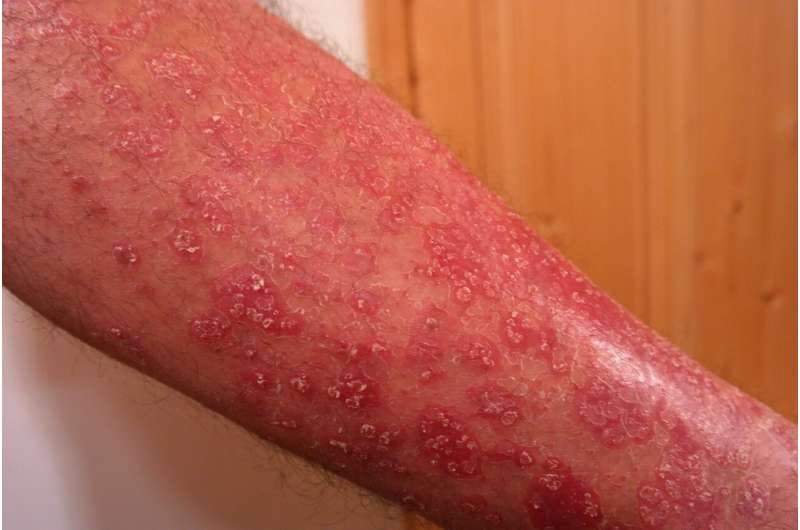Mount Sinai researcher identifies single gene biomarker to differentiate between atopic dermatitis

Mount Sinai researchers have pinpointed a single gene biomarker, nitride oxide synthase 2 (NOS2) that can distinguish atopic dermatitis (AD) and psoriasis with 100 percent accuracy using adhesive tape strips, a non-invasive alternative to skin biopsy. The research will be published online today in the Journal of Allergy and Clinical Immunology.
The study was led by Emma Guttman-Yassky, MD, Ph.D., Sol and Clara Kest Professor and Vice Chair of Dermatology at the Icahn School of Medicine at Mount Sinai. It evaluated tape strips obtained from 20 adults with moderate to severe AD, 20 with moderate to severe psoriasis, and 20 healthy individuals. From each subject, 20 tape strips were collected, some from lesions and the rest from clinically unaffected skin. The skin cells collected from the tape strips were subjected to global molecular profiling for identification of disease-related biomarkers.
Atopic dermatitis, also known as eczema, is an inflammatory, extremely itchy skin disorder that affects more than 31 million adults in the United States, including 10 to 20 percent of children. Psoriasis is a skin disorder that causes red, itchy scaly patches; it has no cure and affects more than 8 million people in the United States.
"In the past, skin tissue biopsies have always been considered the gold standard for distinguishing between inflammatory skin diseases, but they can cause pain, scarring, and increased risk of infection," said Dr. Guttman-Yassky, whose past revolutionary research on AD focused on the mechanism underlying the disease and promoted development of targeted therapeutics for it. "This study shows that using adhesive tape strips may provide a minimally invasive alternative to skin biopsies for monitoring biomarkers of patients with these particular skin diseases and beyond."
The researchers also captured other genes related to immune and epidermal barrier function that were dysregulated in AD and/or psoriasis, and that distinguished each disease from the other. For example, tape strips from AD patients strongly expressed cell markers related to T-helper 2 (Th2) immune response, which is characteristic to AD, while psoriasis patients displayed much higher levels of Th1 and Th17 cytokines, which are characteristic to psoriasis.
Dr. Guttman-Yassky added that the molecular phenotypes described in the study were notably in accord with previous reports from skin biopsy studies and with the current mechanistic understanding of both diseases.
"This revolutionary study emphasizes the great need for better understanding immune and barrier alterations in both adults and children living with inflammatory skin disease," said Mark Lebwohl, MD, Waldman Professor and Chair of Dermatology at the Icahn School of Medicine at Mount Sinai. "The results of this study may help provide a useful alternative to the invasive method of skin biopsies to track cutaneous disease activity in future clinical trials."
More information: Helen He et al. Tape strips detect distinct immune and barrier profiles in atopic dermatitis and psoriasis, Journal of Allergy and Clinical Immunology (2020). DOI: 10.1016/j.jaci.2020.05.048














